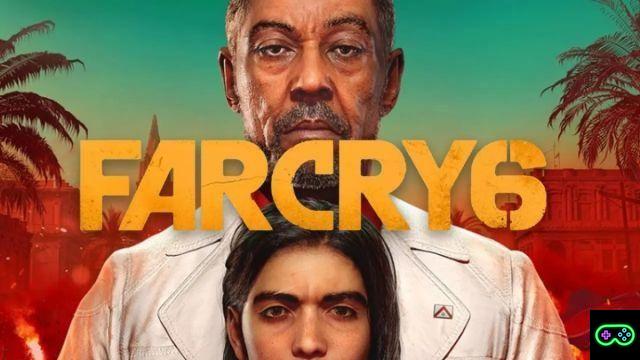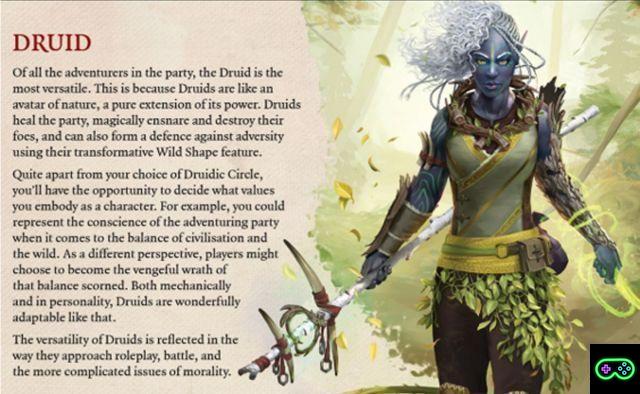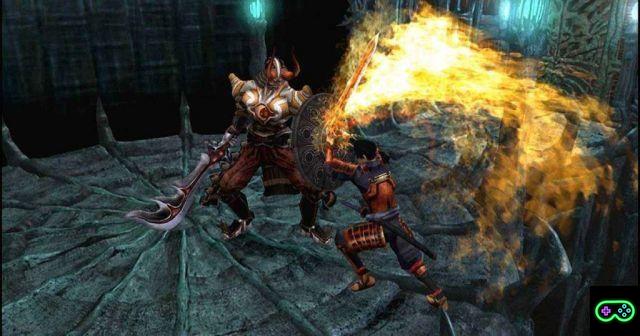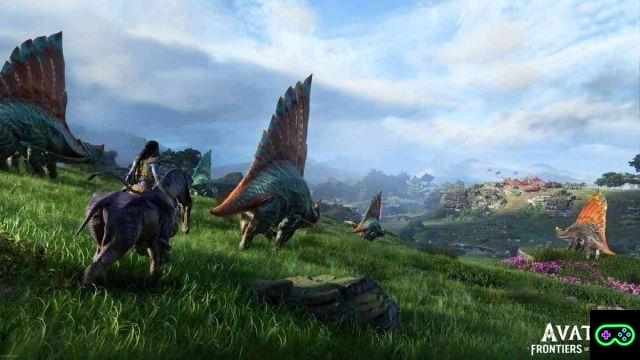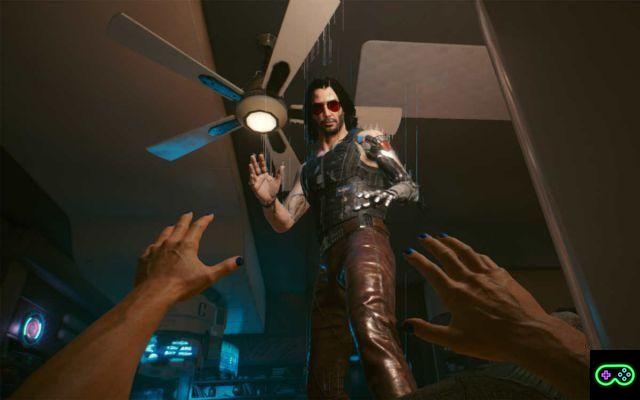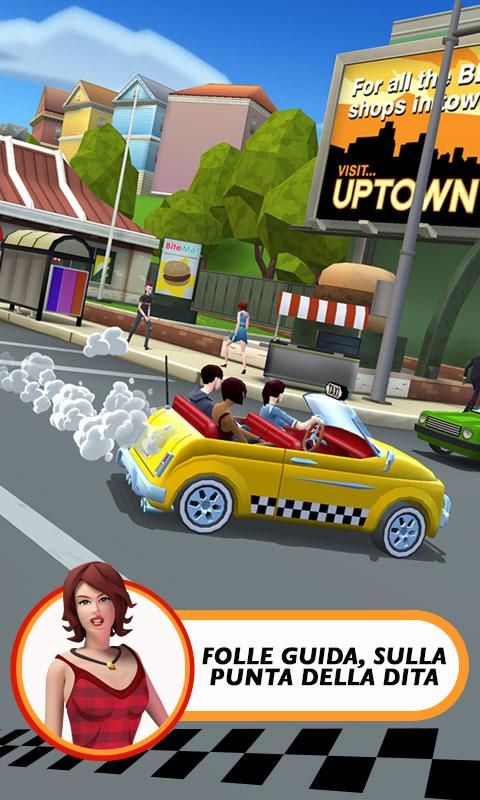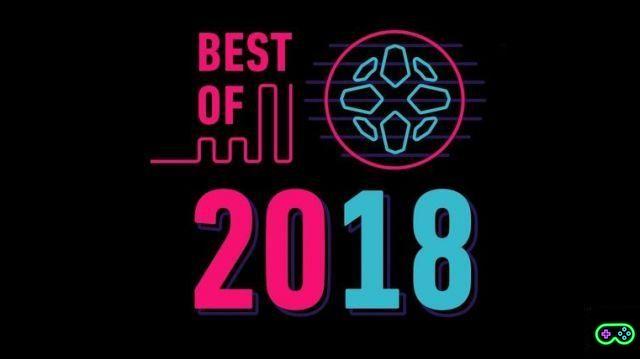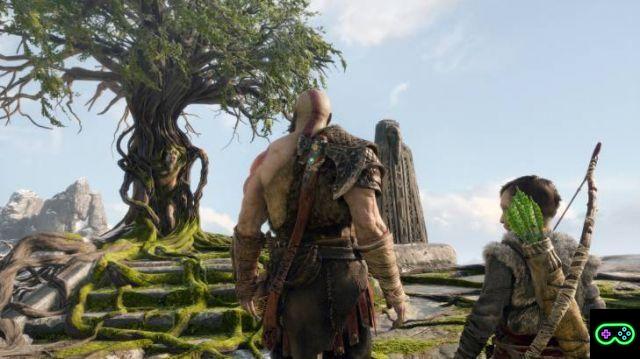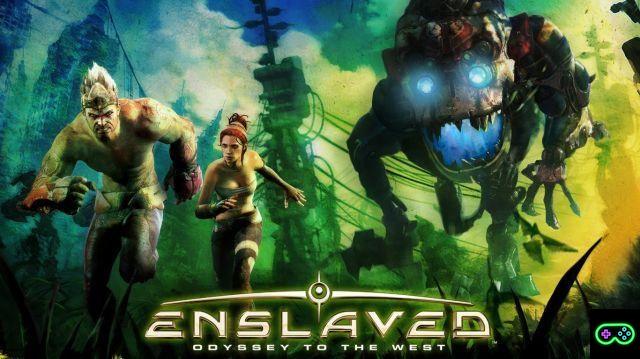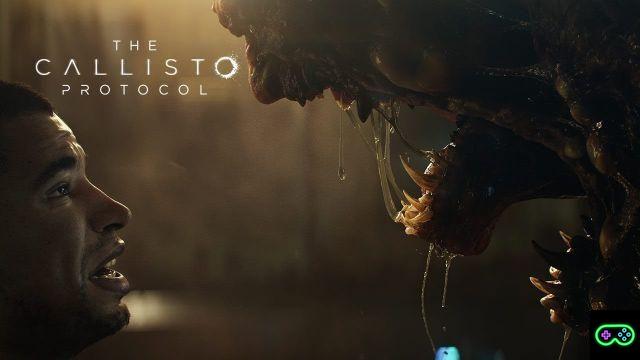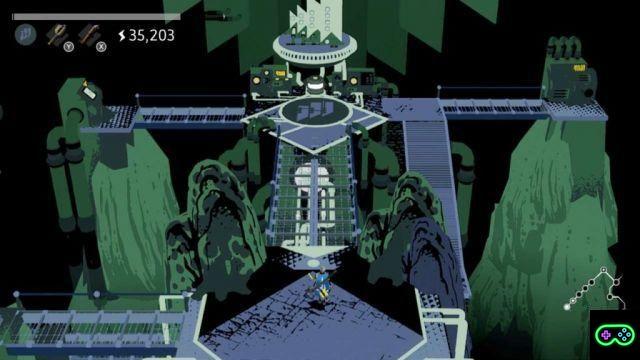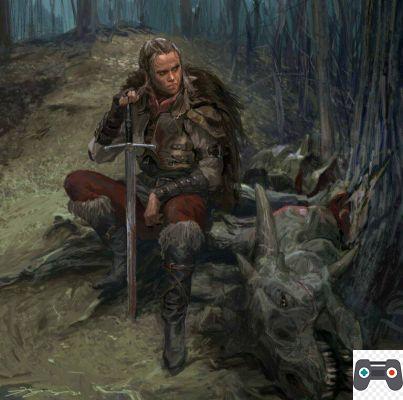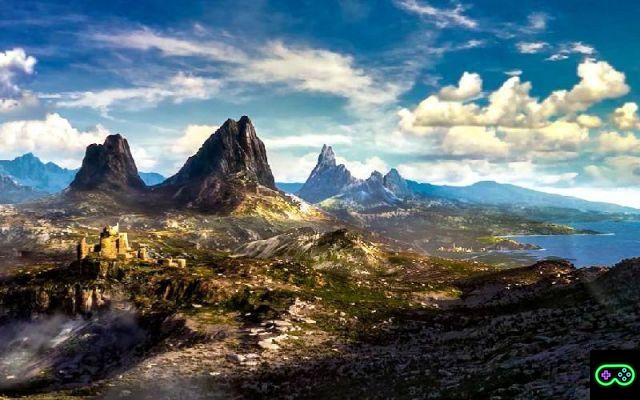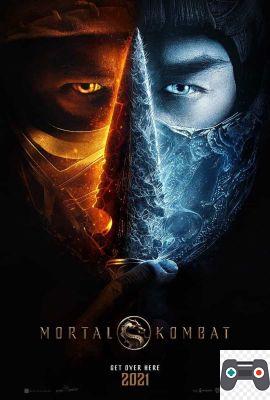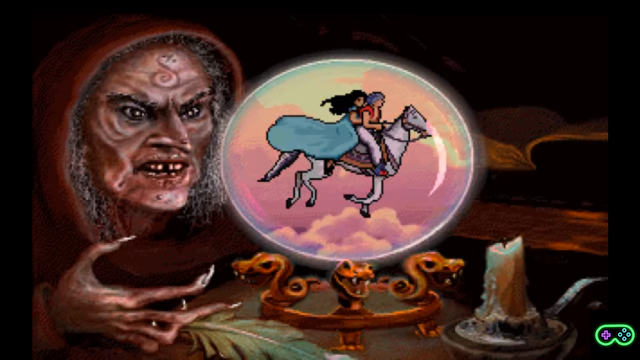We arrived at appointment number ten with the column of the Bear's Lair, and to celebrate this milestone we will talk about one of mine favorite video games ever.
Put on your armor of the School of the Bear (in fact) and get ready to do a lot of slav squats: yes, we are about to delve into the exploration of the mitologia slava in The Witcher 3.
I must premise that the Slavic mythology it represents, for enthusiasts, one of the juiciest and richest springs to drink from. Too bad that it is on average unknown to most people, although a good part of the Slavic mythological landscape has merged, in a watered down and sweetened version, in our folklore and in many of ours traditional fairy tales. You know i Brothers Grimm? No? Good.
Mounted on your credit line Roach, equipped for the occasion with the tri poloski regulations (the three white stripes of Adidas): off we go.
![[The Bear's Lair] Slavic folklore and mythology in The Witcher 3](/images/posts/8910ed96acdb7b1196f604bdd1f86a42-0.jpg)
We said: Slavic mythology in The Witcher 3
Now is the time to move on to the meat. Pass me the expression: I hadn't written it for a long time, come on!
La oral tradition is the main vehicle that brought the Slavic mythology up to us; unlike the Greek myths and, to a lesser extent, the Norse ones, Slavic folklore was fixed in written form only on very few occasions, and only after the arrival of the influence of Christianity.
The chroniclers and Christian missionaries, therefore, recorded for the first time the legends and the myths of glory, frequently distorting them and adapting them to the worldview of the Church, and mixing pagan themes with Christian ones, as often happened.
Many of these myths, then, have been reworked and reinterpreted in a nationalistic key during the nineteenth and twentieth centuries, polluting them further and making them pass behind one again conceptual lens different from the original one.
![[The Bear's Lair] Slavic folklore and mythology in The Witcher 3](/images/posts/8910ed96acdb7b1196f604bdd1f86a42-1.jpg)
Contaminations from the Greek mythology: just to give an example, the Slavic god Svarog it is often identified with Hephaestus, a simile which might be appropriate but which is certainly limiting, and even with Elios e Uranus.
In The Witcher 3, in short, concepts and traditions have been recovered that have traveled over the centuries exclusively through the oral narration, up to our PCs and consoles.
In the different The Witcher 3 localizationsmoreover, the effort made by the translators to make every name and every toponym, that is the name of a place, as natural as possible. And then they say that i game they are uneducative.
Let's see together some examples of the elements of Slavic mythology incorporated into the game. Do you like it? Let's go, and this time for real.
Geralt of Rivia, Strigo profession
We all know the figure of Owl, I presume; well, the author of the saga, Andrzej Sapkowski, was inspired by the Fortune teller (wiedźmak in Polish) of the Slavic mythology.
Il Fortune teller, a term that among other things we also find in EVE Online, is none other than one sorcerer, that is, the male equivalent of a witch. Unlike the latter, however, the connotation of the Vědmák can also be positive: it is a figure that can be protect humans, both to afflict them with pestilences and curses.
![[The Bear's Lair] Slavic folklore and mythology in The Witcher 3](/images/posts/8910ed96acdb7b1196f604bdd1f86a42-2.jpg)
A character purely chaotic, now hostile, now friendly, and often marginalized (but feared and respected, deep down) because of his two souls: one human, and one demonic. poteri primevi e elemental and natural magic run through his veins, making him a more than formidable opponent. Doesn't it remind you of someone?
When a Vědmák dies, he can be made - through a fairly splatter ritual - an undead of a positive nature, which will protect the area from ugly & evil undead.
It doesn't remind you a little of the notorious ones Trials of the Witchers? Sure, the concept has been modified, expanded and fictionalized, but it's not that big a leap. Don't you think?
The villain of history
In the Slavic myth there is a figure that plays a particular role: thearchetype of the villain of history.
Koschei the Immortal, this is his name, it is usually a man who kidnaps his wife or a loved one of the protagonist.
Let's go back to the saga di The Witcher: Is there anyone who kidnaps the hero's loved ones?
Of course! Eredin, Alias the King of the Wild Hunt, that kidnaps Yennefer and for a certain period of time he even captures the same hero of the story, Geralt, in an attempt to get to Characteristic and to the power of Ancient Blood.
![[The Bear's Lair] Slavic folklore and mythology in The Witcher 3](/images/posts/8910ed96acdb7b1196f604bdd1f86a42-3.jpg)
I propose another interesting connection, which however has little to do with Slavic myth.
After being nearly fatally injured in Rivia, betrayed by a man he had spared, Geralt is teleported by Characteristic on a magical island: Avalon. There he will have to heal and regain his strength, along with Yennefer, who will then be kidnapped by the Wild Hunt, and the rest is history.
![[The Bear's Lair] Slavic folklore and mythology in The Witcher 3](/images/posts/8910ed96acdb7b1196f604bdd1f86a42-4.jpg)
Well, you know who else gets betrayed, gets a fatal wound and then finds himself convalescing ad Avalon, ready to go back from Kingdom of the Dead to lead his people against invaders and enemies? King Arthur.
Geralt, on the other hand, he managed - with some help - to return to the ranks of the Hunt Save, who are considered hordes of ghosts, and then lead his clique in the fight against the invader Eredin… Stop me.
The word of the gods
Remember the runestones that studded the weapons and armor of yours Geralt?
They are divinities. Literally. Someone will have already figured this out when I mentioned the part of the glory of Svarog, but anyway here is the complete list:
- Dazhbog (incineration): the god of the sun and fire;
- Chernobyl (attack power): the dark god, who constitutes half of the dualism formed with the white god Belobog;
- Stribog (vacillation) - the god of winds and storms;
- Svarog (armor penetration): the god of war, blacksmiths and celestial fire, summing up in a nutshell a very complex concept;
- Triglav (stunning): the triune god, representing Heaven, Earth and the Underworld, but also the Past, the Present and the Future at the same time;
- Perun (adrenaline): the god of thunder, like Thor for the Norsemen;
- Veles (intensity of the Signs): god of poetry, sight, magic and cattle;
- morana (poisoning): also known as Marzanna, Mara (as it is called in Risen 2), Moraine, Morana e Baba Yaga, is essentially the goddess of death;
- Zoria (freezing): associated with the planet Mercury and often confused with her sister Zvezda (the planet Venus), represents the Light and the Dawn; the two sisters watch over the winged beast Simargl, chained to the North Star (hence perhaps the link with the freezing?), to prevent it from freeing itself and devouring the world, which reminds me a lot of Fenrir area of Norse mythology;
- Devana (bleeding): ever-virgin goddess of hunting and forests, therefore connected to Artemis and Diana.
In expansion Hearts of Stone Two more runes are added, affecting the regeneration granted by food and having very little to do with gods and mythology: Pyerog, name that evokes the pierogi, that is the stuffed ravioli of Eastern Europe, e Cottage cheese, which indicates quark, a type of fresh soft cheese.
Ah, what jokers those of CD Projekt Red!
The runes engraved on the swords
Where are you going? We're not done with the runes, glyphs and the like!
I am referring to the cute and shiny writing that you see engraved on some swords, and particularly in the one depicted in the game trailer.
I confess, here the official CD Projekt Red forum came to my aid: in reality not only those glyphs on the swords, but also the inscriptions on some armor, are characters of theGlagolitic alphabet: the oldest known Slavic alphabet, created by Saints Cyril and Methodius. From this alphabet, later, the modern one will derive Cyrillic alphabet (precisely).
"But what do they mean?" You may be wondering. If you have been following this column from the beginning, and if you have also read my intricate, labyrinthine and bizarre encrypted review of Call of Cthulhu, you already know how unlikely it is that I didn't go out and try to translate them.
![[The Bear's Lair] Slavic folklore and mythology in The Witcher 3](/images/posts/8910ed96acdb7b1196f604bdd1f86a42-5.jpg)
And in fact on the sword of the trailer, for example, we can read none other than a passage from the Our father, quite meaningful and evocative in the hands of one Owl: "And forgive us our debts, as we forgive our debtors."
Honestly, if I had a choice, I would have engraved this: "Steel for the humans, silver for the monsters, gold for the Witcher."
Second Andrzej Sapkowski, instead, the original Geralt's silver sword reported this inscription:
Dubhenn haem am glandeal, morch am fhean aiesin.
Translation: My splendor pierces the shadows, my light dispels the darkness.
This, and I will limit myself to avoid spoilers, is also one of the possible variants of the inscription that we find on the spada di Ciri, at the end of the game.
And toponyms are celebrated: Novigrad
Even the names of places and cities are inspired by those of the Slavic tradition, not only those of the people and, as we will see below, those of the creatures of legends.
![[The Bear's Lair] Slavic folklore and mythology in The Witcher 3](/images/posts/8910ed96acdb7b1196f604bdd1f86a42-6.jpg)
One example among all: Novigrad, a typically Slavic name, whose etymology should refer to something like New Castle.
Alternatively the reference could be to a combination of Nov and Grod, New Town, a bit like the actual city of Novgorod. In short, you understand.
The creatures of mythology in The Witcher 3
Unsurprisingly, the game is full of monsters creatures of Slavic mythology o europea in generale.
Let's see some examples together, without going too far. Or maybe not.
The three Crones
Brewess, Weavess e Whispess: three beautiful women, apparently, who live in the forest and hide a horrible secret.
No, they don't cook crack in a camper, but in reality they are witches who feed on humans and dominate that wood as if it were their fiefdom, predict the future and communicate with their human avatar, Nonna, through an enchanted tapestry.
![[The Bear's Lair] Slavic folklore and mythology in The Witcher 3](/images/posts/8910ed96acdb7b1196f604bdd1f86a42-7.jpg)
Here the mythological reference is twofold.
On the one hand we have the obvious hint a Baba Yaga: a supernatural being of the Slavic myth, a witch who lives in the woods in a shed that stands on crow's feet (a blatantly illegal building!), and who often appears as a trio of deformed sisters.
![[The Bear's Lair] Slavic folklore and mythology in The Witcher 3](/images/posts/8910ed96acdb7b1196f604bdd1f86a42-8.jpg)
On the other we have the Norne scandinave, Greek moire and roman patch: three slightly deformed old ladies who weave the tapestry of the destiny of men and who, at times, can bestow predictions about our future.
L'Alp, or Pandafeche
When I started writing this article, I didn't expect to find a creature of the folklore abruzzese in The Witcher 3.
Yet theIncubus, a monstrous woman, naked but dressed in scales, is a monster who ignores state borders, it seems.
While in The Witcher 3 is basically a kind of loser vampire, in folklore theIncubus it is much more subtle: it sits on the chest of its victims while they sleep, taking their breath away and paralyzing them until they wake up with a start, in terror but often unable to scream or move, for a few moments.
![[The Bear's Lair] Slavic folklore and mythology in The Witcher 3](/images/posts/8910ed96acdb7b1196f604bdd1f86a42-9.jpg)
The Abruzzese and the Marche will have recognized some variant that populates their local folklore: ours is the Pandafeche, which is basically a metaphor for an attack of sleep apnea or sleep paralysis. Sardinians have theAmmuntadore, and surely each region will have its own version.
It is interesting to note that in the Germanic folklore these creatures are called Nachtmahr, that is Nightmares, and they prefer female victims.
- Nightmares, in fact, they are creatures also present in the Roman mythology and in Christian myth. In Malleus Maleficarum, written in the XNUMXth century by two German Dominican friars as a manual for repressing paganism and witchcraft in Germany, the Nightmares are described as male demons who sexually undermine sleeping women, that is, in essence, the male counterpart of the succubi. Which brings us to ...
The insatiable succubi
Maybe the mythological creatures best known ever, thanks also to their conspicuous presence in many video games, including the same World of Warcraft.
Our Geralt he can decide to resolve the few encounters with these creatures in a peaceful way, without drawing his sword. And I'm making an effort to avoid inappropriate jokes.
![[The Bear's Lair] Slavic folklore and mythology in The Witcher 3](/images/posts/8910ed96acdb7b1196f604bdd1f86a42-10.jpg)
While in The Witcher 3 they have a distinctly goat-like appearance in the lower half of the body, more da fauna or satiri what else, in the Roman mythology and in medieval folklore are the female version of Nightmares: beautiful women of a demonic nature, with notable amatory qualities, which steal sexual and vital energies from men, until they are left completely empty.
Princess Witch
No, it's not the female version of one Owl! You know, so far they have never been Witcher female: somewhat the opposite of Bene Gesserit di Dune, , in conclusion.
La Shout she is a woman transformed into a monster by a curse, as in the case of the princess Adda la Bianca, daughter of Re Foltest.
In Slavic folklore instead we find the strzyga, with a similar name to the español witch and whose Romanian male counterpart is strigoi (sounds familiar, huh?): particular individuals, born with two souls, two hearts and a second row of teeth.
![[The Bear's Lair] Slavic folklore and mythology in The Witcher 3](/images/posts/8910ed96acdb7b1196f604bdd1f86a42-11.jpg)
Two souls, like the Fortune teller - Owl - Witcher. But that's not all: in Roman mythology the strix, striga, was a kind of vampire: a nocturnal bird that was not only a bad omen, but also fed on human blood and flesh.
I don't know about you, but as far as I'm concerned it doesn't help me not to confuse the terms.
The disturbing Botchlings
For me it's about the most monstrous creature, saddest and most horrifying of the whole saga. A tragic creature, actually: grotesque zombie fetuses, feeding on pregnant women and other fetuses. In The Witcher 3 they are created when an aborted fetus is not buried or given a name.
Nella Slavic mythology these creatures are screaming spirits, called drekavac, similar in synthesis to banshee that many gamers and role players already know.
In Scandinavian myth they are much less splatter than the version of the CD Project Red: these are basically the ghosts of infants who died before receiving a name, which often have not even been buried. Instead of acting like the Botchlings of the game, the mythological version simply leaps onto the backs of lone travelers, and demands to be taken to a cemetery to be buried worthily. But there is a problem: the closer you get to a cemetery, the heavier the ghost becomes, and if you can't bury it ... you are killed by it.
The Leshen (and the Skyrim Sprigs)
One of the best rendered mythological creatures in the whole saga di The Witcher, in my opinion.
The territorial and monstrous Leshen, guardians of ancient and isolated forests, who incite all nature to massacre the intruder or the unfortunate: branches, roots, crows, wolves and even the Smurfs will jump to your throat, if you run into the wrath of a Leshen.
![[The Bear's Lair] Slavic folklore and mythology in The Witcher 3](/images/posts/8910ed96acdb7b1196f604bdd1f86a42-12.jpg)
The appearance of these creatures is heavily influenced by that of the gods Wendigo Canadians and Americans: in Slavic mythologyactually, leshys look like a lumberjack; in their territory they are as tall as a tree, but when they come out they shrink to the size of a blade of grass. For the Slavic peoples, the leshy are guardians of nature, and are less violent than those of The Witcher 3: they just make travelers lose and kidnap children.
In 'espansione Blood and Winealso, we can get acquainted with one variant of Leshen: i Spriggan, which bring to mind the homonyms of The Elder Scrolls saga.
Le Plague Maiden, or Disease Maidens
A figure present in the folklore and myth of much of Europe, due to a tragedy that has affected our entire continent: the Black fish of the fourteenth century.
In Scandinavian myth, for example, the figure of the Pesta wanders among the farms, and is a harbinger of pestilence. But all is not lost: if the plague has a rake with it, the dead from the plague will be few; if, on the other hand, the creature is holding a broom, well ... "you're done for, take them to the hospital!", paraphrasing the passage The infectors arrive de The Atrocious.
![[The Bear's Lair] Slavic folklore and mythology in The Witcher 3](/images/posts/8910ed96acdb7b1196f604bdd1f86a42-13.jpg)
And in The Witcher 3? Let's find one Disease Maiden in the tragic quest that takes place in the tower of Fyke Island: a female specter, covered with scabs and pustules, that precedes a horde of infected rats, and blows clouds laden with insects not quite healthy. Pretty accurate representation, I would say.
The Noonwraith
Very similar, at least in appearance, to the pestiferous sisters we have just seen, the Noonwraith is a typical creature of Slavic mythology, which in short is the personification of the heat stroke suffered by the laborers during the hard work in the fields in the hot summer months. The Polish name of this creature, Poludnica, can be translated as "Lady of the South", and indeed in The Witcher 3 la Noonwraith it only appears in broad daylight, with its scary appearance and a farmer's sickle in hand.
Fans classical music they will no doubt have recognized the inspiration behind it The Midday Witch, symphonic poem by Antonín Dvořák.
The Ride of the Valkyries of the Wild Hunt
Last but not least, at least as regards the mythological creatures in The Witcher 3.
La Wild Huntthe Wild Hunt, accompanied us throughout the saga of The Witcher, right from the first chapter: an hour of ghostly knights whizzing through the night skies; heavily armed warriors of the afterlife, harbingers of doom, frost, war and death. At least, so they appear to us, until we come to discover the truth about them.
![[The Bear's Lair] Slavic folklore and mythology in The Witcher 3](/images/posts/8910ed96acdb7b1196f604bdd1f86a42-14.jpg)
Am I like that in the myth? Basically yes, and they are present in the European mythology (but how beautiful is it to write "European mythology"?) and in Folklore of most of the countries of the continent, with variations so small as to suggest a single source common to all popular traditions.
La Wild Hunta of the myth consists of a group of ghost hunters, in fact, accompanied by ghostly hounds; as in all hunting expeditions, of course, the armament is not the war one we see in the game: these ghosts are equipped in a lighter way, also to be able to ride faster, and they kidnap anyone who meets them and then take the unfortunates into the game. World of the Dead.
![[The Bear's Lair] Slavic folklore and mythology in The Witcher 3](/images/posts/8910ed96acdb7b1196f604bdd1f86a42-15.jpg)
Many of the legends regarding the Wild Hunt were codified, in the nineteenth century, by none other than Jacob grimm: one of the two Brothers Grimm, famous for theirs Tales of the Hearth, which over the decades have softened and lightened, in some cases becoming gods Disney movie.
Of Figure King of the Hunt, moreover, in the Germanic myth it is identified in the person of Wodan, which takes on a darker guise than its Norse counterpart, Odin.
Slavic mythology is not for Western spies
When it comes to these topics, it is important to point out a key difference between the Slavic mythology and those closest to us: on the one hand i European myths and much of the rest of the world are based on contrast between ideologies, factions and different civilizations, but above all on the conflict between Good and Evil, both in a Manichean dress (or white or black) and with a thousand shades of gray, on the other hand and myths of glory and Eastern Europe are more intimate, and focus more on the traits and facets of the humanity of single individual.
I conflicts between conflicting ideologies, which also includes the eternal struggle between Good and Evil, in the Slavic myth inevitably lead to generalized destruction, and tend to be relegated to a second level, as we said earlier.
A great emphasis, on the other hand, is given to personal values: for example theintegrity and the inner conflicts it brings us, the kindness and the unexpected ramifications of it, and the compassion which, at times, can bring us surprising benefits or, as in the case of Geralt, a pitchfork in the stomach.
![[The Bear's Lair] Slavic folklore and mythology in The Witcher 3](/images/posts/8910ed96acdb7b1196f604bdd1f86a42-16.jpg)
Just to give an example, try to read and romances by Sergei Luk'yanenko, which I highly recommend, or to watch films based on his works: you will immediately notice the intrinsic difference with thewestern epic.
You will find that The Night's Watch, Guardians of the Day, The Twilight Guardians, The Last Guardians and the other titles of what has now become an exalogy are profoundly different from fantasy novels Western Europe: in the saga of the Guardians the main plots, the ones that change the world, are basically in the background, while in the foreground we have the inner conflicts, interpersonal relationships and personal contradictions of the protagonists of the stories.
And if you do the slav squat with your heels up, I have bad news: you are Western spies.
Slavic mythology, The Witcher and TV
We recently talked about the serie TV Netflix su The Witcher, to watch while munching on the very slavissimi semechki (sunflower seeds), in which Henry Cavill interpret Geralt of Rivia. A little while ago we also mentioned the films inspired byLuk'janenko's exalogy, which I return to strongly advise you to look and read, respectively, and not necessarily in that order.
I would like to suggest, for the umpteenth time, to look there serie TV American Gods, where you will find some of the runestones Slavic deities we mentioned in this article.
As always, at this point, all that remains is to give you an appointment next week, with a new episode of Bear's Lair.
![[The Bear's Lair] Slavic folklore and mythology in The Witcher 3](/images/posts/8910ed96acdb7b1196f604bdd1f86a42-17.jpg)

![[The Bear's Lair] Slavic folklore and mythology in The Witcher 3](/images/logo.png)


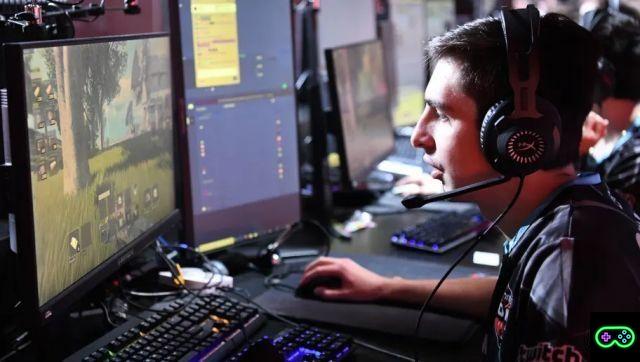
![[The Bear's Lair] God of War: Betrayal and Greek mythology](/images/posts/17432d3b12ecfec44b0b855d20c7520f-0.jpg)
